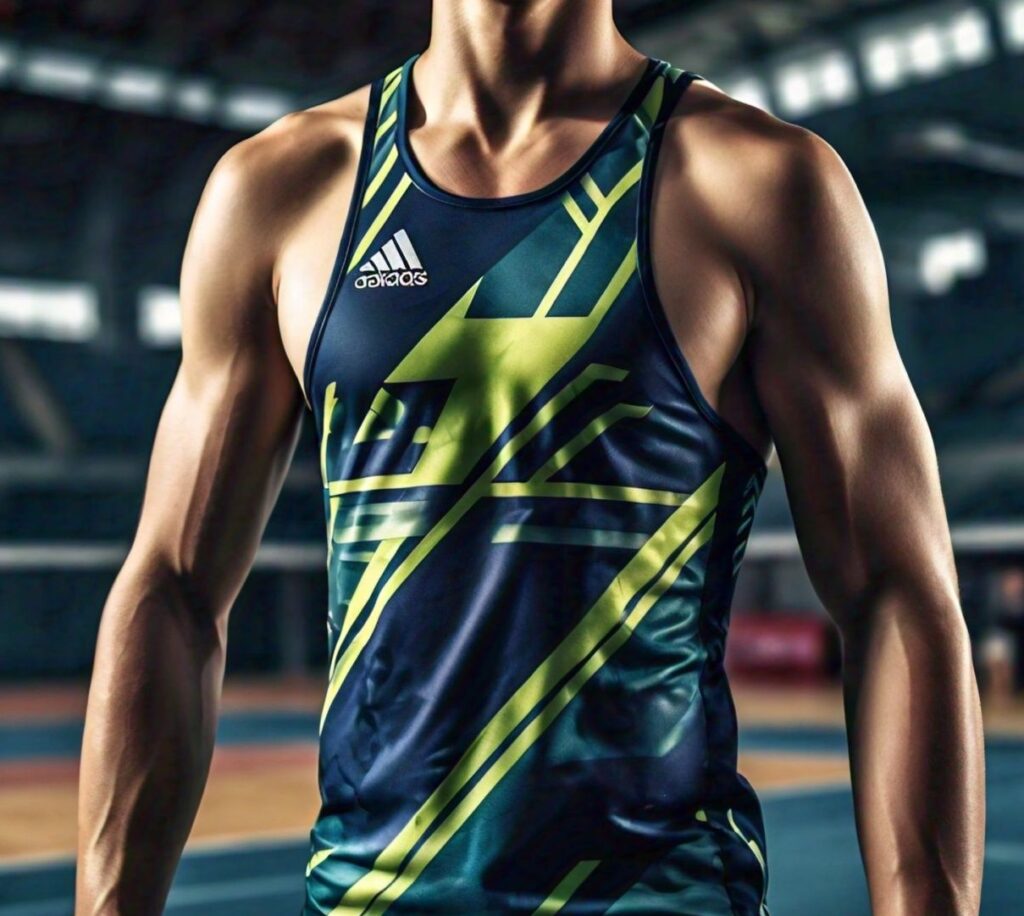Introduction to Singlets
Singlets are a staple in the wardrobe of many athletes, offering both functionality and style. These form-fitting garments, typically made from stretchy materials like lycra or spandex, are designed to provide athletes with freedom of movement while also enhancing performance. With a brief history rooted in various sports disciplines, singlets have evolved to become an essential piece of attire for athletes across the globe.
Types of Singlets
There are several types of singlets tailored to specific sports and activities. Wrestling singlets, characterized by their snug fit and minimal coverage, are commonly worn by wrestlers to comply with uniform regulations and minimize the risk of injury. Weightlifting singlets, on the other hand, prioritize flexibility and support to aid athletes during lifts, while track and field singlets are designed for runners seeking optimal aerodynamics.
Key Features of Singlets
Singlets are distinguished by their unique features, including the choice of material and construction. Most singlets are made from moisture-wicking fabrics that draw sweat away from the body, keeping athletes cool and dry during intense workouts. Additionally, singlets often feature flatlock seams and reinforced stitching to ensure durability and comfort throughout prolonged wear.
Benefits of Using Singlets
The use of singlets offers numerous benefits to athletes beyond their practicality. By conforming to the body’s contours, singlets minimize drag and friction, allowing athletes to move with greater efficiency and agility. Furthermore, the compression provided by singlets can improve blood circulation and muscle recovery, reducing the risk of fatigue and injury during training sessions and competitions.
Choosing the Right Singlet
Selecting the appropriate singlet depends on various factors, including the athlete’s sport, body type, and personal preferences. Athletes should consider the intended use of the singlet, whether for wrestling, weightlifting, or running, and ensure proper sizing for optimal performance and comfort. Most manufacturers provide sizing charts and guidelines to assist athletes in finding the perfect fit.
How to Wear a Singlet
Wearing a singlet correctly is essential to maximize its benefits and performance. Athletes should start by carefully donning the singlet, ensuring that it fits snugly without restricting movement or causing discomfort. Proper alignment of seams and straps is crucial to prevent chafing and irritation during activity. Additionally, athletes should pay attention to the placement of logos and designs, as these can affect aerodynamics and aesthetics.
Maintaining Singlets
To prolong the lifespan of a singlet, proper care and maintenance are essential. Most singlets are machine washable, but athletes should follow manufacturer instructions regarding water temperature and detergent usage to prevent damage to the fabric. After washing, singlets should be air-dried to maintain their shape and elasticity. When not in use, singlets should be stored in a cool, dry place away from direct sunlight to prevent fading and deterioration.
Singlets in Sports Culture
Beyond their practical utility, singlets hold symbolic significance in sports culture, representing dedication, discipline, and athleticism. In wrestling, for example, the singlet serves as a badge of honor for competitors, showcasing their commitment to the sport and its traditions. Similarly, in weightlifting and track and field, singlets are synonymous with high performance and elite athleticism, embodying the spirit of competition and achievement.
Singlets in Popular Culture
Outside of the sporting arena, singlets have permeated popular culture, making appearances in films, television shows, and fashion trends. From iconic wrestling matches to memorable movie scenes, singlet’s have become synonymous with strength, resilience, and rugged masculinity. In fashion, designers have embraced the versatility of singlet’s, incorporating them into streetwear collections and runway looks, further cementing their status as a wardrobe staple.
Controversies Surrounding Singlets
Despite their widespread acceptance, singlet’s have been subject to scrutiny and controversy, particularly regarding uniform regulations and body image concerns. In some sports, strict dress codes mandate the wearing of singlet’s, leading to debates over issues of modesty and personal expression. Additionally, the form-fitting nature of singlet’s has raised questions about body image and inclusivity, prompting calls for greater diversity and representation in athletic apparel.
Future Trends in Singlet Design
Looking ahead, the future of singlet design promises exciting advancements in technology and sustainability. Innovations such as moisture-wicking fabrics. Seamless construction, and customizable features will continue to enhance the performance and comfort of singlets for athletes of all levels. Furthermore, efforts to promote eco-friendly materials and manufacturing processes will ensure that singlet’s. Remain a sustainable and ethical choice for athletes and consumers alike.
Conclusion
In conclusion, singlet’s represent more than just athletic apparel—they embody the spirit of athleticism, tradition, and innovation. Whether worn by wrestlers, weightlifters, or runners, singlet’s serve as a testament to the dedication and passion of athletes worldwide. With their unparalleled performance, comfort, and style. Singlet’s will continue to play a vital role in sports culture and beyond for years to come.
FAQs About Singlets
How do I know if a singlet fits me properly?
Proper fit is crucial for optimal performance and comfort. When trying on a singlet, ensure that it fits snugly without being too tight or restrictive. Pay attention to areas such as the shoulders, chest, and groin to ensure proper coverage and support.
Can I wear a singlet for activities other than sports?
While singlet’s are primarily designed for athletic use, they can also be worn for casual or recreational activities. Many people choose to wear singlet’s for activities such as jogging, cycling. Or weight training due to their comfort and breathability.
Are singlets only worn by professional athletes?
No, singlet’s are worn by athletes of all levels, from recreational enthusiasts to professional competitors. Whether you’re a weekend warrior or an Olympic athlete. A singlet can provide the performance and comfort you need to excel in your chosen sport.
Are singlets suitable for all body types?
Yes, singlet’s are available in a variety of sizes and styles to accommodate different body types and preferences. Whether you’re petite or plus-sized, there’s a singlet out there for you. Be sure to consult sizing charts and guidelines to find the perfect fit for your body.
Can I customize the design of my singlet?
Many manufacturers offer customization options for singlet’s, allowing athletes to personalize their attire with team logos, names, and graphics. Customized singlet’s are popular among sports teams, clubs, and organizations looking to showcase their identity and unity on the field or mat.







